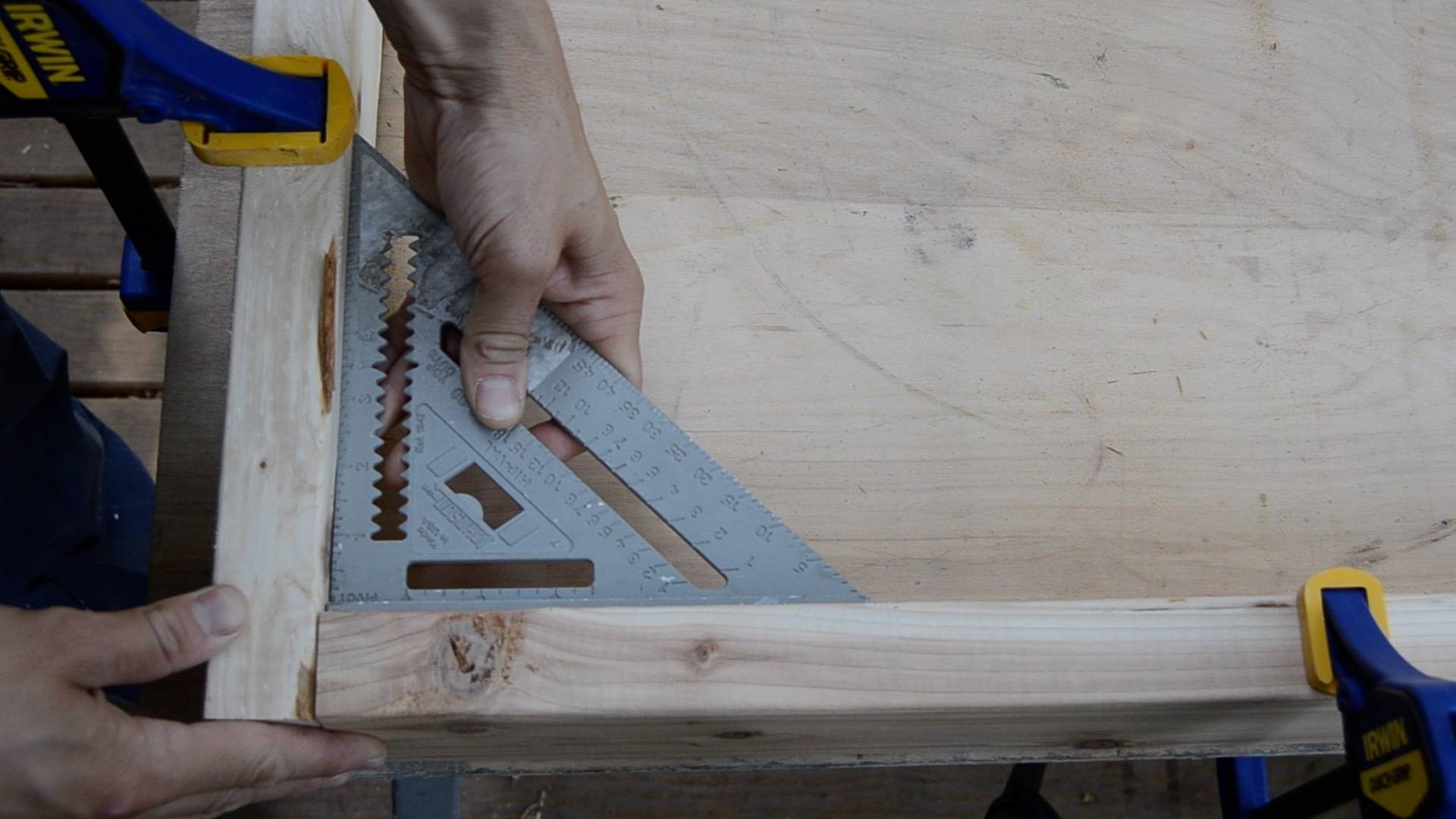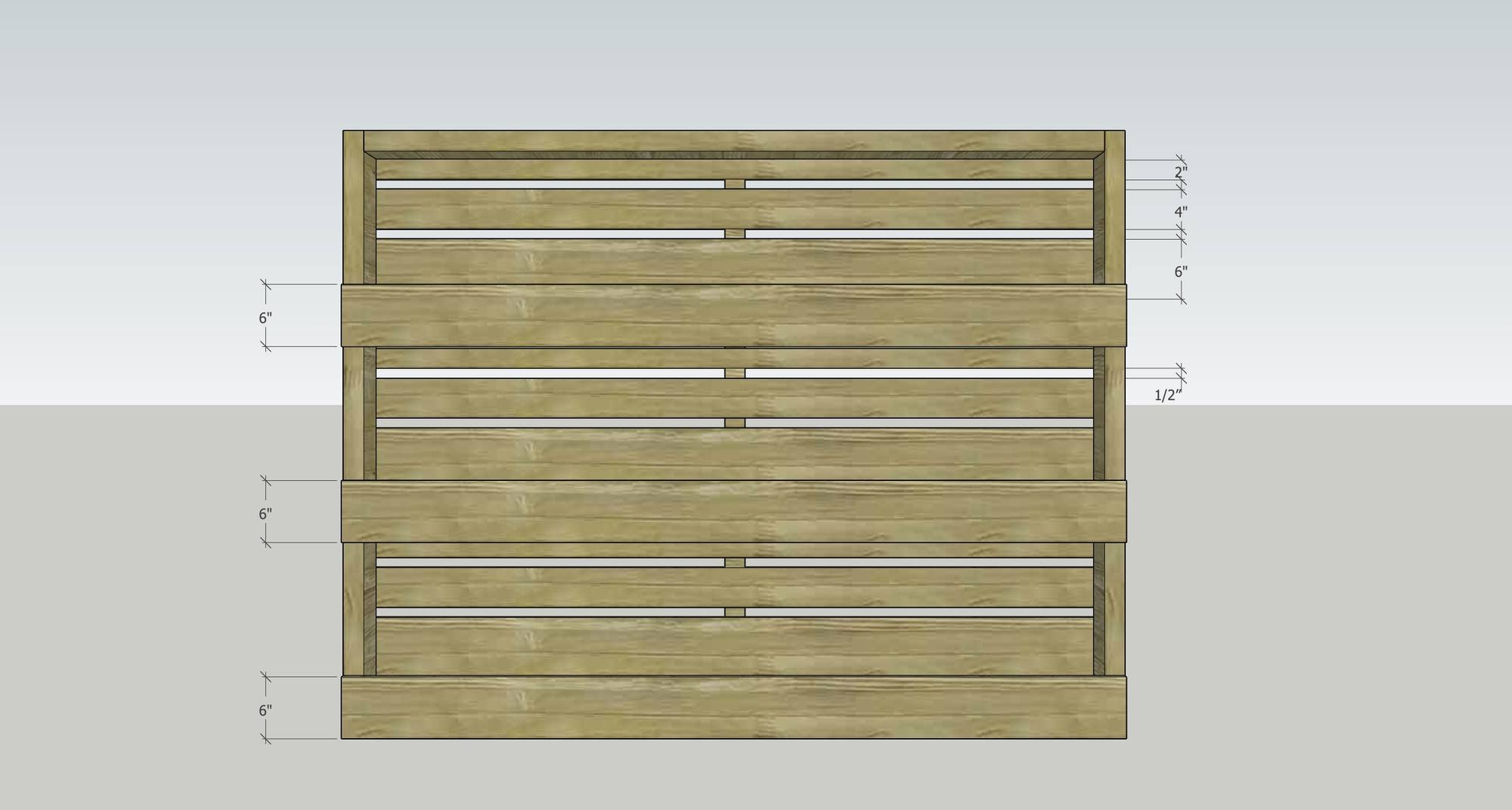Here’s a quick weekend project that can turn an outdoor space into a private, leafy retreat. It uses beautiful, weather-resistant cedar wood, but avoids the cost of expensive cedar lumber. Instead, I bought more affordable cedar fence pickets, smoothed the rough surface, and created the same look for less! Then I finished off the whole project with a coat of SuperDeck® Exterior Oil-Based Transparent Stain. Here’s how you can make one too.
SuperDeck® features premium DuckBack Technology, which penetrates bare wood, and provides excellent protection from sun and premature weathering. One coat of coverage with a transparent finish highlights the wood grain, has excellent water repellency, and contains mildew-inhibiting agents.

Materials
- 1 gallon SuperDeck exterior oil-based transparent stain
- (15) cedar fence pickets (5/8″ x 6″ x 6′)
- (4) cedar 2x4s (8′ long)
- #8 x 1 1/4″ deck screws
- #10 x 2 1/2″ deck screws
- 3 sheets of 18″ x 24″ clear acrylic (0.093″ thickness)
- Thickness planer (optional, but awesome). If you don’t have one, you can use a belt or random orbit sander
- Drill, table saw, miter saw

Step
I started by planing all my cedar fence pickets down until they were smooth. This step is entirely optional, but it does result in a nice looking finished product. If you don’t have a planer, see if you can borrow one from a friend, or from your local tool library. You can also rent one from home improvement stores. They’re easy to use, and a lot of fun!
Alternatively, you can remove the rough surface with some 60 or 80 grit sandpaper and a belt or random-orbit sander.

Step
Next, I cut all the dog-ears off the tops of the pickets, bringing them to 71 inches. Since I wanted a mod-ish slat pattern, I ripped three of my newly-made cedar boards into 4″ and 2″ widths, and one board into 2″ strips. You should end up with:
– Six strips at 2″ width (three 2″ slats, and three 2″ pieces for trimming the front)
– Three boards at 4″ width
– Six boards at 6″ width
– Three boards at 5″ width (top and side trim pieces)

Step
Now it’s time to build the frame. Guess what? This thing is really simple! It’s just a square, made out of cedar 2x4s! You’ll need to cut your 2x4s to length:
– 2 at 68 inches (top/bottom)
– 2 at 56 1/2 inches (sides)
Now, build a square using the 71″ pieces for the top and bottom, and the 56″ pieces for the sides. Fasten everything using 2 1/2″ decking screws, taking care to keep the angles as square as possible.
Here’s what the frame looks like:

The wall will also need ‘feet’ to keep it upright. How you build these is up to you, and will depend a lot on where you plan on installing it (I attached mine to the side of our deck). But a simple way to do it is to cut 2′ pieces from the leftover cedar 2x4s, and affix each to the bottom, perpendicular to the frame.

Step
Now you’ll need to create the hidden groove, which will hold the plexiglass shelves, giving the wall a ‘floating’ effect. On each of your 6″ wide cedar slats, cut a 1/4″ deep groove using your table saw blade, 1/2″ from the edge of the board.


Step
Stand the frame up, and begin putting the cedar slats on. The pattern is:
1. 6″ wide piece in the front (with groove at the top/back)
2. 6″ wide piece in the back (with groove at the bottom/front)
3. 4″ wide piece in the back
4. 2″ wide piece in the back
The second 6″ wide slat needs to overlap the first one by 1″. The groove on the top/back of the first 6″ wide slat will line up with the groove on the one facing it. The third and fourth slats should be spaced 1/2″ above each previous slat.
The slats are installed with galvanized nails (using a hammer, or a nail gun). You can also screw them in place with decking screws if you prefer.
Step
You’re almost done! Now it’s time to trim out the frame and hide the joints. Using 5″ wide cedar boards, trim the sides and top of the frame. Then, use 2″ wide pieces of cedar, cut to 12″ long, to cover the bits of the frame that still show on the front of the piece, between the slats. Make sure to measure the gaps for these trim pieces first – they may not have ended up at exactly 12″.
Install all the trim with galvanized nails.



Step
Although cedar is perfectly weather-resistant on its own, it will fade to a dull gray if left unstained. I wanted a sharper, richer look for this planter wall, so I decided to stain it using SuperDeck oil-based transparent stain. It has a penetrating, oil-based formula that enriches and protects the natural beauty of the wood. It’s easy to apply! Just clean the wood off with a damp rag, and when it’s dry, paint on the stain with a brush or roller (or both).
Step
Cut the plexiglass shelves to width using a table saw. I tried scoring and snapping these and it just didn’t work reliably. Ripping them on the table saw is fast and easy, but make sure to using eye protection, as the plastic shavings do tend to fly about.
Now, insert the shelves into the grooves, and add plants, candles, or whatever else you think looks good.
That’s it! Take a look at how mine turned out:






If you loved this idea, please help us share it by pinning this image! Thanks!

This post was sponsored by Sherwin-Williams, makers of quality paint and wood stain products. All opinions are mine alone. Thanks for supporting the brands that help make Curbly possible.

